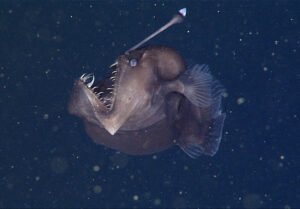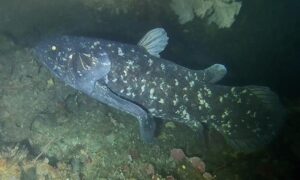Gerard Barron is the owner of The Metals Company, which is planning to conduct deep-sea mining in the Clarion-Clipperton Zone (CCZ) located in the Pacific Ocean. The CCZ is an area where tectonic plates break apart, and it is rich in essential minerals for humans, such as cobalt, nickel, and lithium, which are crucial for battery production. While life thrives throughout the depths of the ocean, it is particularly abundant in this zone. Many species of animals and bacteria inhabit the region, especially near hydrothermal vents and on the rocks that contain these valuable minerals.
People are seeking permission for deep-sea mining in that area. Unfortunately, deep-sea mining is harmful to the deep-sea environment, the animals that inhabit it, and even the planet as a whole. The seas and oceans play a crucial role in absorbing 90% of the greenhouse gases from the atmosphere. If we damage even a small part of the ocean ecosystem, we risk jeopardizing the entire system. The deep-sea regions are particularly vital, as I mentioned in my post “Fear of the benefits”. Allowing mineral extraction in the Clarion-Clipperton Zone (CCZ) could lead to the loss of 5,142 species that have already been recorded there. Of these, 80% to 92% are not yet identified, and it is estimated that there may be between 6,000 and 8,000 species living in that area.
Gerard Barron claims that by extracting certain materials, he can help save the planet by creating more electric batteries. However, this raises a significant concern about how he plans to achieve this while potentially harming one of the key elements that protect our environment. Furthermore, his so-called environmentally friendly method, which he describes as being as simple and safe as picking up balls from a golf course, is far from neutral.
This method involves deploying a deep-sea robot that operates along the ocean floor to collect rocks that house important bacteria vital for purifying water. Unfortunately, the robot would not be able to distinguish between rocks and other marine life in the area, potentially putting many animals at risk.
Additionally, there is the question of how the collected rocks would be transported back to the ship. The robot would be connected to a pipe that pulls the rocks aboard. However, this process raises concerns about what happens to the sand and powdered metal that was created by the rocks. The robot would continuously discharge some of this material back into the ocean, creating a cloud of sand and metals that could be harmful to local marine life.

Moreover, another pipe would extend from the ship into shallower waters, releasing more metals and sand in a similarly disruptive cloud. The particles ejected from this pipe would then settle on the ocean floor, posing a threat to phytoplankton, zooplankton, and various sea creatures living in the affected areas. A significant portion of this sediment would remain suspended in the water, potentially impacting marine ecosystems far from the original site of release.
Humanity today faces the challenge of finding a method to meet our needs without harming the planet. This is a complex problem to solve. One example is the debate over whether cars should be powered by electricity or combustion. Both options come with their own advantages and disadvantages. Meanwhile, research is also being conducted on vehicles powered by hydrogen or sodium. It is crucial that our actions do not exacerbate the situation due to ignorance or a desire for profit. By destroying one part of the environment in an attempt to protect another, we will not bring about meaningful change and may even worsen the situation.



